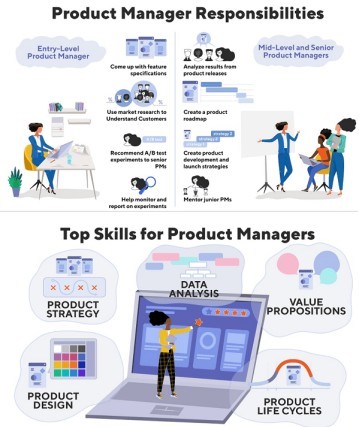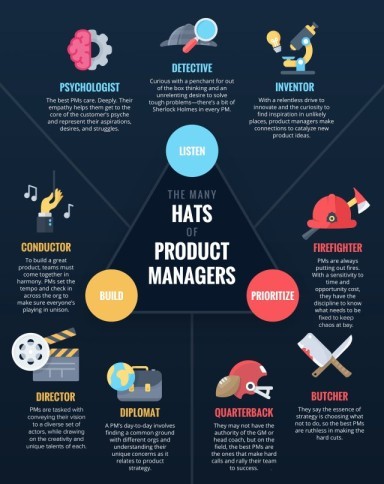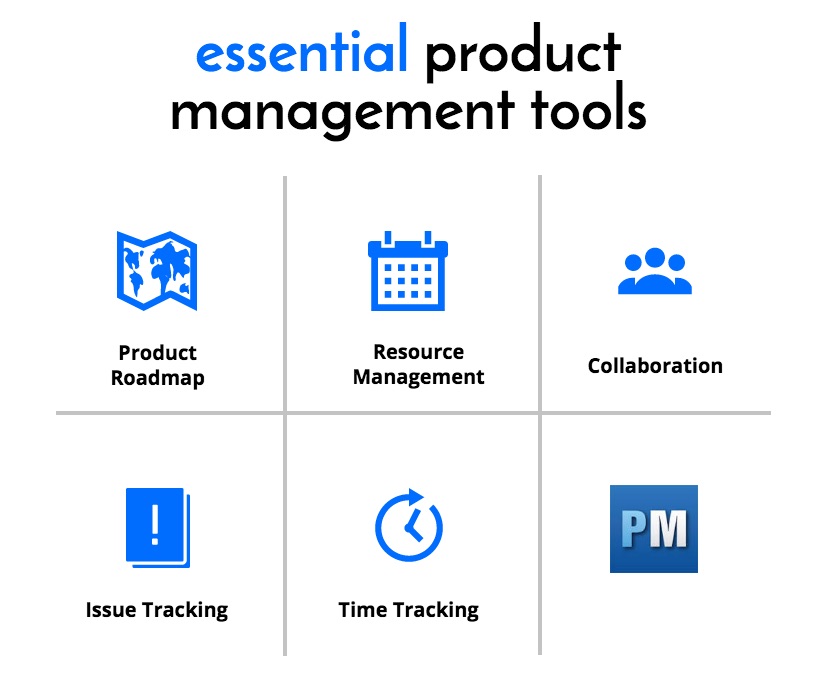Product Management Monday: Your Simple Path to Success
Introduction to Product Management Monday
Product Management Monday, a concept gaining popularity in the business world, is not just another trend; It is a strategic approach to success. Product management plays a key role in the development and launch of products, ensuring that they meet market demands and exceed customer expectations. Product management involves overseeing the entire lifecycle of a product, from idea generation to development, launch, and beyond. It’s about understanding customer needs, defining product features, and collaborating with cross-functional teams like engineering, design, and marketing.
The Significance of Product Management
- Alignment with Customer Needs: Product managers act as the voice of the customer within the organization. By conducting market research, gathering feedback, and analyzing data, they ensure that the product meets the needs and preferences of the target audience.
- Strategic Direction: Product managers are responsible for defining the strategic direction of the product. They develop a clear vision, set goals, and create a roadmap to guide the development team in achieving those objectives.
- Cross-Functional Collaboration: Product management involves working closely with various departments, including engineering, design, marketing, and sales. Product managers facilitate communication and collaboration between these teams to ensure that everyone is aligned and working towards the same goals.
- Prioritization and Decision Making: With limited resources and competing priorities, product managers must prioritize features and initiatives based on their impact and feasibility. They make data-driven decisions to maximize the value delivered to customers and the business.
- Continuous Improvement: Product management emphasizes continuous improvement through iterative development cycles. Product managers gather feedback, analyze metrics, and iterate on the product to address user needs and market changes effectively.
- Market Competitiveness: A well-executed product management strategy can give organizations a competitive edge in the market. By understanding market trends, identifying opportunities, and delivering innovative solutions, product managers help their companies stay ahead of the competition.

Key Skills for Successful Product Managers
- Strategic Thinking: Product managers need to think strategically to define the vision, goals, and roadmap for the product. They must understand market trends, competitive landscapes, and customer needs to make informed decisions about the direction of the product.
- Communication: Effective communication is crucial for product managers to collaborate with cross-functional teams, stakeholders, and customers. They need to convey their ideas clearly, listen actively, and articulate the product vision to ensure alignment and understanding among all parties involved.
- Problem-Solving: Product managers encounter various challenges throughout the product lifecycle. They must be adept at identifying problems, analyzing root causes, and devising creative solutions to overcome obstacles and drive the product forward.
- Analytical Skills: Product managers rely on data to make informed decisions about the product. They need strong analytical skills to gather and interpret data, analyze market trends, track key metrics, and derive actionable insights to drive product strategy and improvements.
- User-Centric Mindset: Understanding the needs, behaviors, and preferences of users is essential for successful product management. Product managers should empathize with users, conduct user research, gather feedback, and advocate for user-centric design principles to ensure that the product meets customer needs and delivers a positive user experience.
- Leadership: Product managers often lead cross-functional teams without direct authority. They need strong leadership skills to inspire, motivate, and empower team members, foster collaboration, and drive consensus towards common goals.
- Time and Priority Management: Product managers juggle multiple tasks and priorities simultaneously. They must be skilled at managing their time effectively, prioritizing tasks based on importance and urgency, and allocating resources efficiently to meet deadlines and deliver results.
- Adaptability: The product management landscape is constantly evolving, with shifting market dynamics, emerging technologies, and changing customer preferences. Product managers need to be adaptable and open to change, able to pivot quickly, and adjust their strategies to stay ahead in a dynamic environment.
Building a Product Management Mindset
Customer-centric focus: Develop a deep understanding of customer needs, pain points and priorities. Always make it a priority to advocate for the end user and strive to create products that truly solve their challenges and delight them.
Data-driven decision making: Embrace data as a guiding force in product management. Use analytics, user feedback, market research, and other data sources to inform your decisions and validate assumptions. Let data drive your product roadmap and feature prioritization.
Strategic vision: Think long term and set a clear strategic vision for your product. Understand market trends, competitive landscape, and emerging technologies to anticipate future opportunities and challenges. Develop a roadmap that aligns with your vision and business goals.
Cross-functional collaboration: Product management is a team sport. Collaborate closely with stakeholders across functions such as engineering, design, marketing, sales, and customer support. Promote open communication, build trust, and work together toward shared objectives.
Continuous approach: Take an continuous approach to product development. Recognize that creating great products is an ongoing process of experimentation, learning, and refinement. Release early and frequently, collect feedback from users and iterate based on their insights.
Ownership and Accountability: Take ownership of your product and be accountable for its success. Set clear goals and metrics to measure progress and take responsibility for delivering results. Be proactive in finding solutions to tackle challenges and overcome obstacles.
Empathy and Emotional Intelligence: Cultivate empathy for your users, team members, and stakeholders. Listen actively, try to understand their perspective and be empathetic to their needs and concerns. Develop strong interpersonal skills and emotional intelligence to build positive relationships and navigate complex dynamics.
Continuous Learning: Be curious and committed to continuous learning and growth. Keep up with industry trends, best practices, and new methods in product management. Look for professional development opportunities, whether through courses, workshops or networking events.

Simple path to success in product management
- Learn the Basics: Start by understanding the fundamental concepts of product management. Familiarize yourself with key methodologies, tools, and frameworks such as agile development, user-centric design, and product lifecycle management.
- Gain Experience: Get hands-on experience by working on product-related projects, either within your current role or by volunteering for additional responsibilities. Seek opportunities to collaborate with cross-functional teams and learn from experienced product managers.
- Continuous Learning: Invest in your professional development by staying updated on industry trends, attending workshops, and participating in relevant courses or certifications. Take advantage of resources like books, online courses, and networking events to expand your knowledge and skills.
- Build Relationships: Cultivate strong relationships with colleagues, stakeholders, and mentors within and outside your organization. Networking and building connections can open doors to new opportunities, provide valuable insights, and support your growth as a product manager.
- Focus on Results: Set clear goals and metrics to measure the success of your product initiatives. Prioritize tasks based on their impact and focus on delivering tangible results that align with business objectives. Be proactive in addressing challenges and finding solutions to drive success.
- Iterate and Improve: Embrace an iterative approach to product management. Release early versions of your product, gather feedback from users, and iterate based on their insights. Continuously seek ways to improve and refine your product to better meet customer needs and market demands.
- Stay Agile: Adapt to changes quickly and maintain flexibility in your approach. Embrace agile principles and practices to respond effectively to shifting priorities, evolving requirements, and market dynamics. Be open to experimentation and willing to pivot when necessary.
- Communicate Effectively: Develop strong communication skills to articulate your ideas, influence stakeholders, and align cross-functional teams. Foster open and transparent communication channels to ensure everyone is on the same page and working towards common goals.
Setting clear goals: The path to success starts with setting clear and achievable goals. Product managers must define the purpose of their product and outline the steps to realize it.
Prioritizing tasks effectively: In a fast-paced environment, effective task prioritization is critical. Product managers must identify and focus on high-priority tasks in line with overall objectives.
Collaboration and Teamwork: Product management is a collaborative effort. Successful product managers foster a culture of teamwork, encouraging cross-functional collaboration for optimal results.
Challenges in Product Management and How to Overcome Them
Doubtful Requirements: Often, product requirements may be unclear or subject to change, making it challenging to plan and prioritize effectively. To overcome this, focus on establishing clear communication channels with stakeholders, conducting regular feedback sessions, and adopting agile methods to adapt to rapidly evolving requirements.
Resource constraints: Limited resources, whether it be time, budget, or manpower, can hinder product development and delivery. To overcome this challenge, prioritize tasks based on their impact and feasibility, negotiate for additional resources when necessary, and explore alternative solutions such as outsourcing or automation to optimize resource utilization.
Competing Priorities: Product managers often change multiple priorities and initiatives at once, creating conflicting demands on their time and attention. To manage competing priorities, establish clear goals and priorities, communicate them effectively to stakeholders, and use tools such as priority form or active frameworks to align tasks with strategic objectives.
Stakeholder management: Balancing the needs and expectations of various stakeholders, including customers, executives, and cross-functional teams, can be challenging. To navigate this, promote open and transparent communication, actively listen to stakeholders’ concerns and try to understand their perspectives. Establishing trust and building strong relationships can help ensure alignment and collaboration.
Market Uncertainty: The dynamic nature of markets can bring uncertainty and unpredictability into product management efforts. To minimize this risk, conduct thorough market research, closely monitor industry trends, and regularly collect feedback from customers. Be agile and responsive to market changes and ready to adapt your product strategy accordingly.
Resistance to change: Introducing new products or features may face resistance from internal stakeholders or customers accustomed to existing solutions. To address resistance to change, clearly communicate the value proposition, involve stakeholders early in the decision-making process, and provide training and support to facilitate adoption. Highlighting the benefits and proactively addressing concerns can help overcome resistance and increase acceptance.
Measuring success: Defining and measuring success metrics can be challenging, especially when it comes to measuring the impact of product initiatives. To overcome this, set clear, measurable goals aligned with business objectives, rigorously track key performance indicators (KPIs), and iterate based on data-driven insights. Regularly review and adjust your metrics to ensure they remain relevant and meaningful.
Tools and Technologies in Product Management

- Product Management Platforms: Platforms like Jira, Trello, Asana, or Monday.com help product teams manage tasks, track progress, and collaborate on projects. They provide features such as task boards, kanban boards, and project timelines to organize workflows and streamline communication.
- Product Roadmap Software: Tools like Aha!, Roadmunk, or ProductPlan enable product managers to create and visualize product roadmaps. These platforms allow teams to outline strategic initiatives, prioritize features, and communicate the product vision effectively to stakeholders.
- Customer Feedback and Analytics: Platforms such as Intercom, UserVoice, or Zendesk gather customer feedback, requests, and support tickets in one place. They provide insights into user behavior, preferences, and pain points, helping product managers make data-driven decisions and prioritize product improvements.
- User Research Tools: Tools like UserTesting, Optimal Workshop, or Hotjar facilitate user research and usability testing. They allow product teams to conduct surveys, interviews, and usability tests to gather qualitative insights and validate product ideas, features, and designs.
- Prototyping and Design Tools: Design tools like Sketch, Adobe XD, or Figma enable product teams to create prototypes, wireframes, and mockups. These tools help visualize product concepts, iterate on designs, and collaborate with designers and developers to bring ideas to life.
- Product Analytics Platforms: Platforms such as Google Analytics, Mixpanel, or Amplitude provide insights into product usage, user engagement, and conversion metrics. Product managers can track key performance indicators (KPIs), analyze user behavior, and measure the impact of product changes on business outcomes.
- Collaboration and Communication Tools: Tools like Slack, Microsoft Teams, or Zoom facilitate real-time communication and collaboration among remote or distributed teams. They provide features such as chat, video conferencing, and file sharing to streamline communication and enhance team productivity.
- Version Control Systems: Version control systems like Git or Subversion enable product teams to manage changes to code and collaborate on software development projects. They provide features such as branching, merging, and code reviews to maintain code quality and track changes effectively.
Few Real Life Success Stories in Product Management
- Apple’s iPhone: The launch of the iPhone in 2007 revolutionized the mobile industry and transformed Apple into one of the most valuable companies in the world. Apple’s product management team, led by Steve Jobs, focused on creating a device that combined a phone, music player, and internet browser into one sleek, intuitive package. By prioritizing user experience, design innovation, and ecosystem integration, Apple set a new standard for smartphones and disrupted the market.
- Netflix’s Content Personalization: Netflix’s recommendation algorithm is a prime example of successful product management in the realm of entertainment. By analyzing user behavior and preferences, Netflix’s product team developed a sophisticated recommendation system that suggests personalized content to each subscriber. This approach has significantly increased user engagement, retention, and satisfaction, driving Netflix’s rapid growth and dominance in the streaming industry.
- Tesla’s Model S: Tesla’s Model S, introduced in 2012, is widely regarded as a groundbreaking achievement in electric vehicle (EV) technology. Tesla’s product management team, led by Elon Musk, focused on designing a high-performance, long-range EV that would appeal to mainstream consumers. By leveraging innovative battery technology, over-the-air software updates, and a sleek design, Tesla disrupted the automotive industry and established itself as a leader in sustainable transportation.
Continuous Learning in Product Management
Dynamic Industry: The technology industry, in which product management often resides, is constantly evolving with new technologies, methodologies, and regularly emerging market trends. Continuous learning ensures that product managers stay updated with the latest developments, enabling them to make informed decisions and innovate their products.
Customer needs: Understanding customer needs and preferences is fundamental to effective product management. Continuous learning allows product managers to stay connected with their target audiences, gather feedback, and adapt their strategies to meet evolving customer demands.
Competitive Landscape: Markets are highly competitive, with new players entering the landscape and existing competitors innovating rapidly. Continuous learning helps product managers stay abreast of competitive strategies, industry benchmarks, and emerging trends, empowering them to make strategic decisions to maintain or gain a competitive edge.
Technological advancements: Technology is at the heart of many products today, and advances in areas like AI, machine learning, and blockchain can have a significant impact on product development and strategy. Continuous learning enables product managers to effectively understand and leverage these technologies to enhance their products and provide value to customers.
Cross-functional collaboration: Product management involves working together with cross-functional teams such as engineering, design, marketing, and sales. Continuous learning promotes better collaboration by helping product managers understand their coworkers’ perspectives, priorities, and workflows, leading to more effective teamwork and alignment toward common goals.
Personal Development: Continuous learning benefits the product manager not only professionally but also personally. It allows individuals to expand their knowledge, develop new skills and broaden their perspective, promoting personal growth and fulfillment in their careers.
Measuring Success in Product Management
- User Engagement: Monitor metrics such as active users, session duration, and user retention rates to gauge how engaged and satisfied users are with the product. Higher engagement typically indicates that the product is providing value and meeting user needs effectively.
- Customer Satisfaction: Utilize surveys, feedback forms, or Net Promoter Score (NPS) to measure customer satisfaction and loyalty. Positive feedback and high NPS scores indicate that customers are happy with the product and are likely to recommend it to others.
- Revenue Growth: Track revenue metrics such as total sales, average revenue per user (ARPU), or customer lifetime value (CLV) to assess the financial performance of the product. Increasing revenue over time demonstrates that the product is generating value for the business and driving growth.
- Market Share: Analyze market share data to understand how the product is performing relative to competitors in the industry. Growing market share indicates that the product is gaining traction and capturing a larger share of the market.
- Time to Market: Measure the time it takes to develop and launch new features or updates to the product. Shorter time to market indicates that the product team is agile, responsive to customer needs, and able to deliver value quickly.
- Feature Adoption: Evaluate the adoption rates of new features or product enhancements to determine their effectiveness and impact on user behavior. High adoption rates suggest that features are resonating with users and addressing important needs or pain points.
- Conversion Rates: Track conversion metrics such as sign-up rates, conversion funnels, or conversion rates for specific actions (e.g., purchases, subscriptions) to understand how effectively the product is converting users into customers or achieving desired outcomes.
- Quality and Reliability: Monitor metrics related to product quality and reliability, such as bug reports, crash rates, or customer support tickets. Low rates of issues or complaints indicate that the product is stable, reliable, and providing a positive user experience.
Creating a Product Management Community
- Define the Purpose: Clarify the purpose and goals of the community. Determine what you hope to achieve, whether it’s sharing knowledge, networking, professional development, or supporting each other in overcoming challenges.
- Identify Target Audience: Identify the target audience for the community, such as product managers, product owners, designers, engineers, or anyone interested in product management. Consider their backgrounds, experience levels, and specific interests to tailor the community’s offerings accordingly.
- Choose a Platform: Select a platform or medium for hosting the community, such as a dedicated website, online forum, social media group, or messaging platform like Slack or Discord. Choose a platform that aligns with the preferences and needs of your target audience.
- Create Content and Resources: Develop valuable content and resources to engage community members and provide them with relevant information and learning opportunities. This could include articles, blog posts, case studies, webinars, workshops, templates, or toolkits related to product management best practices, trends, and insights.
- Facilitate Discussion and Collaboration: Encourage community members to participate in discussions, ask questions, share experiences, and collaborate on projects. Facilitate networking opportunities, such as virtual meetups, networking events, or mentorship programs, to foster connections and build relationships within the community.
- Invite Experts and Guest Speakers: Invite experts, thought leaders, and industry professionals to share their knowledge and insights with the community through guest posts, webinars, or Q&A sessions. Their expertise can provide valuable perspectives and enrich the learning experience for community members.
- Promote Engagement and Participation: Actively engage with community members, respond to inquiries, and encourage participation through contests, challenges, or themed discussions. Recognize and celebrate member contributions to foster a sense of belonging and community spirit.
- Collect Feedback and Iterate: Regularly solicit feedback from community members to understand their needs, preferences, and areas for improvement. Use feedback to iterate and refine the community’s offerings, ensuring that it continues to evolve and meet the needs of its members over time.
- Promote the Community: Spread the word about the community through marketing efforts, social media, professional networks, and partnerships with relevant organizations or influencers. Encourage existing members to invite their peers and colleagues to join, helping the community grow organically.
- Maintain and Sustain: Dedicate time and resources to maintain and sustain the community over the long term. Establish guidelines, moderation policies, and community norms to ensure a positive and inclusive environment for all members. Continuously nurture the community, promote connections, and adapt to changing needs and dynamics to keep it growing.
Tips for Dream Product Managers
Building a Strong Portfolio
- Understand the Business: Gain a deep understanding of the business goals, objectives, and priorities. Align your product strategy with the overarching business strategy to ensure that your initiatives contribute to the company’s success.
- Know Your Users: Invest time in understanding your users’ needs, preferences, and pain points. Conduct user research, gather feedback, and empathize with your users to build products that truly address their needs and deliver value.
- Be Data-Driven: Base your decisions on data rather than assumptions or intuition. Use metrics and analytics to track product performance, measure success, and identify areas for improvement. Let data guide your product roadmap and prioritization decisions.
- Think Strategically: Take a long-term, strategic approach to product management. Define a clear vision and roadmap for your product, and prioritize initiatives that align with your strategic objectives. Anticipate market trends and plan ahead to stay ahead of the competition.
- Communicate Effectively: Develop strong communication skills to articulate your ideas, influence stakeholders, and align cross-functional teams. Be clear, concise, and persuasive in your communication, and foster open dialogue to ensure everyone is on the same page.
- Be Agile and Adaptive: Embrace agile methodologies and practices to respond quickly to changes in the market, customer feedback, or business priorities. Be willing to pivot and iterate on your product strategy based on new information and insights.
- Collaborate Cross-Functionally: Work closely with cross-functional teams, including engineering, design, marketing, and sales, to bring your product to life. Foster a collaborative and inclusive environment where everyone feels valued and empowered to contribute.
- Stay Curious and Learn Continuously: Never stop learning and exploring new ideas, technologies, and methodologies. Stay curious about the latest trends and best practices in product management, and seek out opportunities for professional development and growth.
Conclusion
Monday In the dynamic field of product management, success lies in a combination of skills, mindset and adaptability. Aspiring and experienced product managers alike can walk the path to success by embracing innovation, prioritizing effectively, and fostering a collaborative environment.
FAQ:
1. Is Product Management Monday only for tech products?
Product Management Monday is not limited to technology but applies to a variety of industries. The principles can be adapted to suit different product types.
2. How can I improve my analytical skills for product management?
Improving analytical skills includes practicing data interpretation, staying updated on industry trends, and seeking feedback on your analytical decisions.
3. What are the major challenges facing product managers?
Key challenges include balancing stakeholder expectations, dealing with uncertainties and managing the fast-paced nature of product development.
4. Can I transition to product management from a different area?
Yes, many successful product managers come from diverse backgrounds. Building relevant skills and demonstrating transferable experiences can facilitate this transition.
5. Are there specific certifications for product managers?
Several certifications, such as the Certified Scrum Master (CSM) or Certified Product Manager (CPM), can enhance a product manager’s skill set and credibility.




